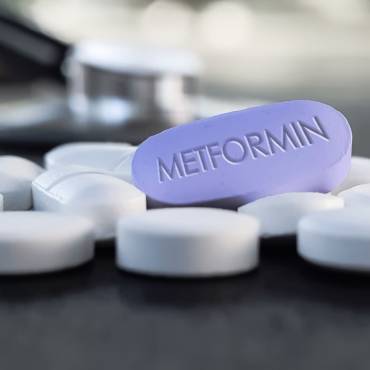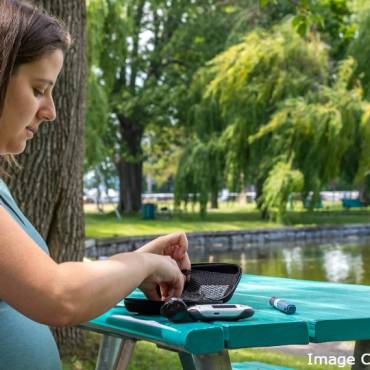
Managing diabetes is challenging. You must change your lifestyle to manage the condition and take the prescribed medications. Diabetes management often involves changes in eating habits or patterns and the medications we take. Thus, suddenly increasing your fibre intake is not a good idea. A gradual increase is the best way to avoid diabetes and stomach pain. You may also observe changes in how your gastrointestinal tract feels, sounds, and response.
Change in Eating Habits
Does diabetes cause stomach pain? Continue to read to know the answer. If you have been diagnosed with diabetes, you are likely making modifications in dietary habits, including more foods rich in fibre, such as beans, fruits, and vegetables. Fibre intake can be filling without adding unwanted calories, and it can also control cholesterol levels. But there is a problem if you rapidly increase the fibre intake in your diet. Gas and bloating are the adverse effect of fibre which ultimately bring stomach aches. Gradually increasing the intake may help. Eat more legumes such as beans and lentils to increase fibre intake.

Type 2 Diabetes Stomach Pain
Changing eating habits is the first change one makes when diagnosed with diabetes mellitus. Healthcare experts often advised having more foods containing fibre, such as fruits, vegetables, and beans. The fibre content in these foods fills you without adding unwanted calories and improves abnormal cholesterol levels.
But a lot of fibre can cause stomach problems such as gas and bloating, which can also contribute to Type 2 diabetes stomach pain.
Glucose Lowering Medicines
Several prescription medicines are used to lower blood glucose levels in patients with Type 2 diabetes and cause stomach issues. Healthcare experts suggest you initiate with a low dose and gradually increase it based on your doctor’s instructions.
Metformin
Metformin is a first-line treatment for patients with Type 2 diabetes to get blood sugar levels in range. It can lead to nausea, diarrhoea, or heartburn. Metformin is a typical medication used in most patients who have Type 2 diabetes. When there is a problem associated with the intake of metformin, it is abdominal discomfort. 5 to 10 per cent of people can’t tolerate it.
Metformin is started at a low dose and increased for several weeks per the patient’s condition. A specific type of metformin may help reduce nausea and heartburn; using the extended-release form can be helpful for some people. Some patients experienced no issues with a lower dose of lof metformin, but on the higher dose, they experienced problems, even when they previously tolerated the higher dose.
Blood Sugar Levels
Blood sugar, whether extremely high or low, can bring gastrointestinal problems.
A new class of injectable drugs, GLP-1 agonists Byetta, can cause nausea and vomiting. According to experts, these side effects associated with the use of injectable drugs are often dose related. Start with a low dose. Byetta should be used 30 to 45 minutes before a meal. Taking this antidiabetic medicine before or after a meal helps some people. Experts found that some people tolerate one injectable drug better than another. It is best to use any antidiabetic medicine under the supervision of a doctor.
Because GLP-1 agonists slow down stomach emptying, these drugs can cause feelings of fullness. People receiving this injectable drug may think something is wrong, but their stomach is full and not used to that feeling.
High or Low Blood Sugar
1. High Blood Sugar (Hyperglycaemia)
Extremely high glucose levels can cause two very serious conditions:
Diabetic Ketoacidosis – It develops when the body can’t release enough insulin. Insulin plays a major role in helping sugar, an important energy source for muscles and other tissues. Diabetic ketoacidosis is the build-up of acids in your blood. It can occur when the blood sugar is too high.
Hyperosmolar Hyperglycaemic state – This condition is more likely to affect an elderly or undiagnosed individual with type 2, involving profound dehydration, confusion, and speech or motor skills.
The symptoms of both conditions may include nausea, cramping, vomiting, or diabetic pain left side abdomen. Both these conditions require immediate medical care. Seek immediate medical help if you develop such symptoms with high blood sugar or if you have Type 1 diabetes and have found a large amount of ketone in your blood and urine during the tests. You may need insulin and intravenous fluids.
2. Low Blood Glucose (Hypoglycaemia)
Missing meals when taking certain blood glucose-lowering drugs, such as sulfonylureas or insulin, or taking too much rapid-acting insulin can cause low blood glucose levels in some people. Nausea may be a symptom of low blood sugar. If you have no idea, please confirm with your healthcare specialist if you have low blood glucose and how to treat it. Also, discuss the glucagon injection kit if it’s right for you if you cannot keep down foods or liquids.
ALSO READ: Common Gastro Medicines You Should Know About
Takeaway
When managing diabetes, learning to live with stomach problems may take time. Diabetes and stomach pain come hand in hand. Feeling exhausted is normal but continuing to manage your diabetes is important during this time. A healthcare specialist may help you reduce diabetes and stomach cramps and maintain optimal health.
admin
Latest posts by admin (see all)
- What is Triluma Cream? Uses, Benefits, and How It Works for Skin - December 26, 2024
- What Causes Dark Spots? Understanding the Science of Hyperpigmentation and How Skin Lightening Products Help - December 26, 2024
- Tretinoin Gel vs. Cream: Which Formulation is Right for Your Skin? - December 20, 2024



